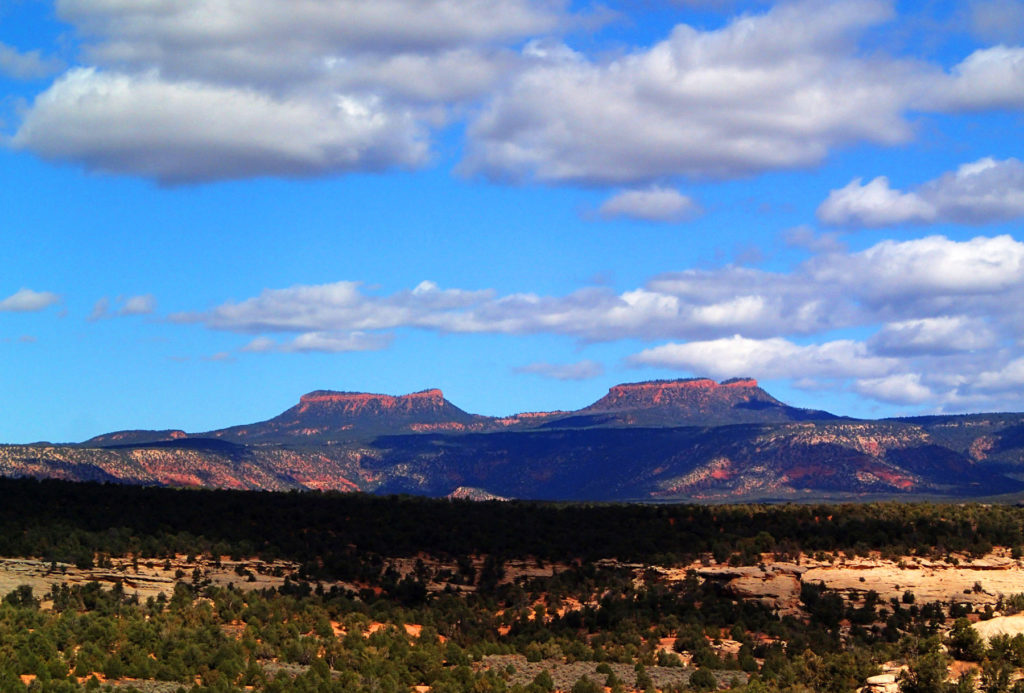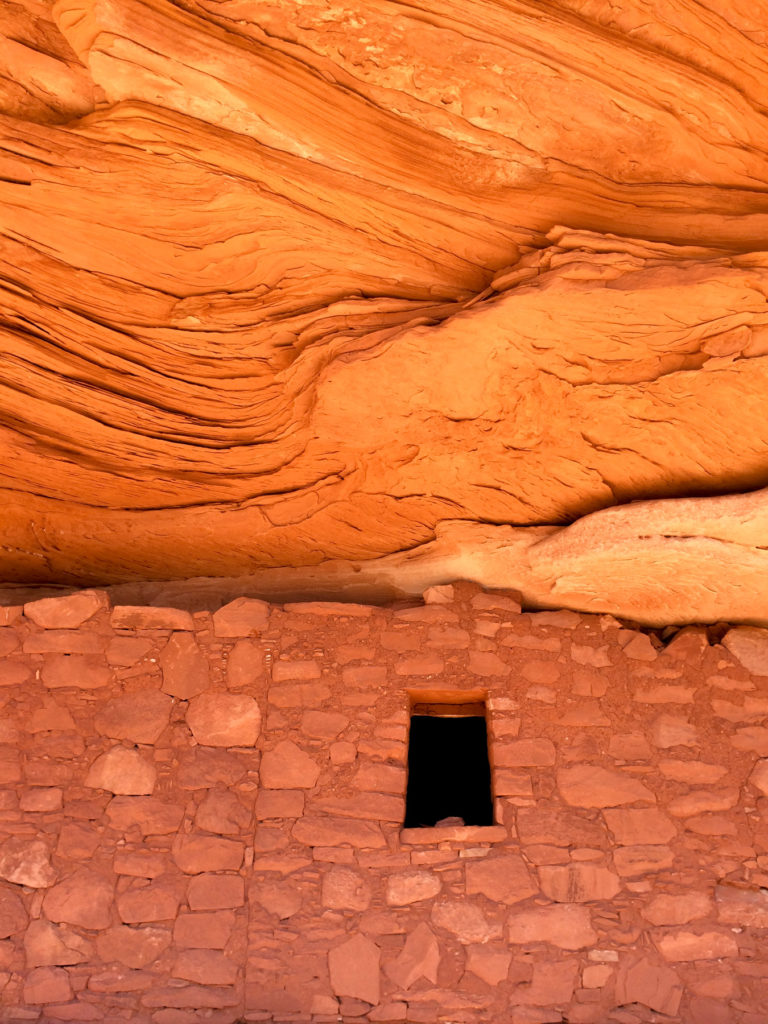- Home
- >
- Press Releases/Announcements
- >
- Statement on Shash Jáa National Monument and Indi...
Statement of Archaeology Southwest
William Doelle, President and CEO
Shash Jáa National Monument and Indian Creek National Monument Act (H.R. 4532)
House Natural Resources Federal Lands Subcommittee Hearing
January 9, 2018
Chairman McClintock, Ranking Member Hanabusa, and members of the Committee, thank you for the opportunity to provide Archaeology Southwest’s perspective on the Shash Jáa National Monument and Indian Creek National Monument Act (H.R. 4532). Archaeology Southwest strongly opposes this legislation as introduced. For reasons outlined as follows, we hope the committee will dismiss this bill.
Background Regarding Archaeology Southwest
For three decades, Archaeology Southwest has practiced a holistic, conservation-based approach to exploring the places of the past. We call this Preservation Archaeology. We pursue this mission by conducting innovative, big-picture research using methods that minimize consumption of nonrenewable archaeological resources. Archaeology Southwest protects archaeological sites for the future by holding conservation easements and through fee ownership of important archaeological properties. We also partner with government agencies and other nonprofits to promote landscape-scale preservation of cultural resources through the creation or expansion of national monuments and other public preserves. Archaeology Southwest promotes increased communication and collaboration with Native American communities and seeks to expand our capabilities and effectiveness in this area.
All these activities are guided by our vision of a society where the places of the past are valued as the foundations for a vibrant future. Headquartered in Tucson, Arizona, Archaeology Southwest has a staff of 14 and is favored with the support of some 1,500 members from across the United States. Archaeology Southwest Magazine and other outreach efforts encompass the American Southwest and Mexican Northwest, and our research and site protection efforts focus on the American Southwest.
The Bears Ears National Monument
In 2014, Archaeology Southwest published a special double issue of our quarterly Archaeology Southwest Magazine that shared information about southeastern Utah’s Greater Cedar Mesa region with a broad general public. In 2015, the five tribes of the Bears Ears Inter-Tribal Coalition proposed a national monument of 1.9 million acres that fully encompassed the Greater Cedar Mesa area. In 2016, when it became clear that the Public Lands Initiative developed by Utah Representatives Rob Bishop and Jacob Chaffetz was deeply flawed, Archaeology Southwest called on President Obama to use the Antiquities Act of 1906 to proclaim Bears Ears National Monument. After a multiyear process of study and outreach to diverse local and national interests, President Obama acted, declaring a 1.35 million-acre Bears Ears National Monument that had substantial overlap with the 1.45 million acres proposed as national conservation areas under the Public Lands Initiative.

Revocation of Bears Ears National Monument
Over the summer of 2017, Bears Ears National Monument and other public lands across the nation received dramatic levels of public support—nearly 3 million comments called for leaving our national monuments unchanged. Archaeology Southwest submitted multiple statements of knowledge-based support for maintaining Bears Ears National Monument intact. Nevertheless, President Trump issued an illegal proclamation (Presidential Proclamation 9681) on December 4, 2017, that revoked Bears Ears National Monument and instead called for two small, noncontiguous units. The Trump proclamation excluded more 1.1 million acres that are no longer protected as a national monument. In August 2017, Archaeology Southwest released a report that presented data from dozens of archaeological experts with on-the-ground knowledge of the Bears Ears landscape. The report clearly establishes that Bears Ears National Monument comprises more than 100,000 archaeological sites. It is likely that at least 85,000 of those sites are no longer adequately protected. Of particular importance, the Bears Ears Inter-Tribal Coalition has unequivocally stated that the extensive cultural landscape of the Bears Ears region is deeply sacred to the five member tribes, among other indigenous groups.
To correct the unlawful actions called for in President Trump’s December 4 revocation proclamation, Archaeology Southwest has joined a diverse coalition and has filed suit against the Trump Administration.
Comments on H.R. 4532
It is profoundly insulting to Native American tribes—sovereign Nations—that this bill is being positioned as creating “the first tribally managed national monument.” In fact, this bill falls far short of that mark.
The five tribes of the Bears Ears Inter-Tribal Coalition celebrated the proclamation by President Obama on December 28, 2016 (Presidential Proclamation 9558) of Bears Ears National Monument, even though it fell short of their goal to establish a 1.9-million-acre national monument by some 350,000 acres.
The only element of H.R. 4532 that respects the intentions and goals of the five tribes of the Bears Ears Inter-Tribal Coalition is Section 3, which withdraws all lands specified in Presidential Proclamation 9558 (just over 1.35 million acres) from future mineral leasing.
Although that one element is encouraging, a congressional bill that does not restore the national monument to the 1.35-million-acre scale could only receive our support if the legislation were negotiated with the Native American tribes that have long advocated for Bears Ears National Monument.
The “Tribal Management Council” is a disingenuous pretense. First, a national monument is a land status for federal lands—most simply described as public lands. Our public lands are managed within a federal legal framework. This bill purports to transfer management of federal lands to local and state interests, and, misleadingly, to tribes.
Moreover, of the eight-person Tribal Management Council—the primary management entity—four of the members are not tribal representatives selected by the tribes. Two members will be from the Department of the Interior (one) and the Department of Agriculture (one). There is no requirement that those civil servants be enrolled members of any Native American nation. Of the four “tribal” members, their appointment by the president is subject to “consultation with the Utah Congressional delegation.” That stipulation violates the sovereign status of Native American Nations. The state of Utah is not a sovereign nation, and its congressional delegation should not have a role in the legal process of defining who might represent a sovereign tribal nation.
The language of this bill imposes further improper constraints on the two tribal nations that it purports to include on the Management Council. Of the three Navajo members, one must be from the Aneth Chapter, and all three must be Utah residents. The Ute tribal representative must be a Utah resident from the White Mesa Ute community. For all four of the tribal member appointments, the sovereign status of the Navajo, Ute Mountain Ute, and Uintah and Ouray Ute tribes is simply ignored, despite longstanding legal obligations requiring the U.S. government to work with federally recognized tribes on a government-to-government basis.
In regard to the Bears Ears Commission, the 2016 proposal by the Bears Ears Inter-Tribal Coalition indicated that an area of some 1.9 million acres is sacred to the five tribes of the Coalition. Although the Obama proclamation cut that area to 1.35 million acres, it did recognize that the entire area was a sacred cultural landscape to the Coalition tribes and to other native nations. The Trump proclamation, however, simply states that the Bears Ears buttes are sacred to tribes. Thus, neither the Trump proclamation nor this bill acknowledges the foundational reason for tribal involvement. Furthermore, if the Bears Ears Commission were to participate in this purported tribal management of the new national monument unit, their recommendations could simply be rejected and “explained” by the Utah-dominated Tribal Management Council.
Indeed, the very use of a Navajo name, Shash Jáa, for a new national monument unit that includes the Bears Ears underscores the lack of thoughtful deliberation in drafting this bill. The members of the Bears Ears Inter-Tribal Coalition had intentionally requested use of the English-language name “Bears Ears” in order to avoid using any one tribe’s name for the area.
For the proposed new Indian Creek National Monument, the concept of tribal management is dropped altogether. It also continues the process of delegating the management of public lands to the State of Utah and San Juan County, as 60 percent of the membership of Indian Creek’s proposed management council would come from those government levels. One token tribal member from a Utah tribe may sit on the Indian Creek Management Council.
Conclusion
This bill requires large-scale revision. If its goal is to achieve tribal management of a national monument, then that process must begin with direct consultation with Native American tribes.

2 thoughts on “Statement on Shash Jáa National Monument and Indian Creek National Monument Act (H.R. 4532)”
Comments are closed.
Explore the News
Media contacts:
Bill Doelle
wdoelle@archaeologysouthwest.org
(520) 240-7456
Kate Sarther Gann
kate@archaeologysouthwest.org
(520) 818-8033
Thank you for providing such a powerful voice for so many of us who want Bears Ears to be protected and cherished for all Americans!
It’s an honor to be a member. Thank you for this excellent work, an eloquent and informative statement.